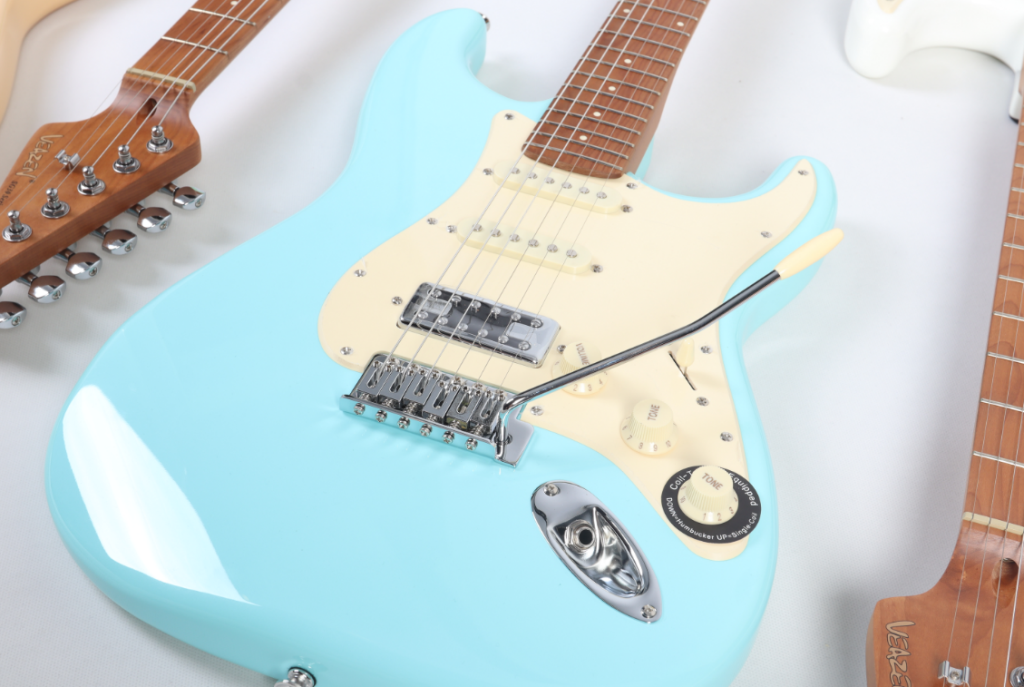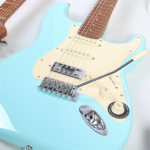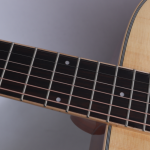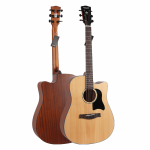The “resistance” of an electric guitar pickup (usually referring to DC resistance, measured in ohms Ω) is a physical parameter that measures the conductivity of the pickup’s coil. It is an important reference for understanding the pickup’s characteristics and tone. Below is an explanation of its definition, influencing factors, and specific effects on tone:
1. Definition of Pickup Resistance
The core of a pickup is a copper coil wrapped around a magnet (a single-coil pickup has one set of coils, while a humbucker has two sets of reverse-wound coils). Resistance refers to the DC resistance of this coil, typically measured directly across the coil ends with a multimeter (in ohms Ω). It essentially reflects the physical properties of the coil: the more turns the coil has (the longer the wire), the higher the resistance; the thinner the wire diameter (the smaller the cross-sectional area), the higher the resistance (for the same length, thinner wire has higher resistance).
2. Core Effects of Resistance on Tone
Resistance itself does not directly “determine” tone, but it is strongly correlated with the number of coil turns and wire thickness. These parameters affect the pickup’s output power and frequency response, which ultimately shape the tone:
- Impact on Output Power: Higher resistance = stronger output
More coil turns (higher resistance) generate a higher induced electromotive force (signal strength) when cutting magnetic field lines, meaning greater output power. This manifests as:
- Louder volume and a wider dynamic range (more layering between soft and loud notes);
- Easier to drive distortion effects (high-output pickups paired with distortion pedals or amplifiers produce a “fuller” distorted texture with stronger impact).
- Impact on Frequency Response: Higher resistance = more “restrained” highs, richer mid-lows
Coils exhibit different “impedance effects” on different frequencies (i.e., “inductive reactance,” which is positively correlated with frequency: higher frequencies encounter greater inductive reactance).
-
Low-resistance pickups (typically 5-8Ω for single-coils, 7-12Ω for humbuckers):
Fewer turns and possibly thicker wire result in lower inductive reactance, which weakly resists high frequencies. Thus, highs are more transparent, bright, and detailed (e.g., Fender single-coil pickups, often 5-7Ω, with crisp highs ideal for country or surf rock). Mid-lows are relatively “lean,” and the overall tone is more “slender” with sensitive dynamics (delicate tone when played softly, suitable for clean sounds or mild overdrive). -
High-resistance pickups (14-20Ω for most humbuckers, with some high-output models reaching 25Ω or more):
More turns and possibly thinner wire create higher inductive reactance, which strongly resists high frequencies. This weakens highs (sounding “darker” or “muffled”) but enriches mid-lows (especially low frequencies and low mids) (e.g., Gibson humbuckers, often 14-16Ω, with prominent mids ideal for blues or hard rock). Their high-output nature delivers a “tighter” tone with strong low-frequency impact when distorted (suitable for metal or heavy music).
3. Note: Resistance Is Not the Only Criterion—Other Parameters Matter
While resistance is important, it cannot alone determine tone. A pickup’s sound is also influenced by:
- Magnet type: Alnico magnets (e.g., Alnico 2/5) produce warm tones with soft dynamics; ceramic magnets offer stronger output, a “harder” tone, and sharper highs (a ceramic pickup may sound “hotter” than an Alnico one at the same resistance).
- Coil winding method: Loose vs. tight winding affects the coil’s distributed capacitance, altering high-frequency response.
- Magnet strength: Strong magnets (e.g., high-energy ceramic magnets) increase “pull” on the strings, potentially making the tone “tighter” with slightly shorter sustain.
Summary
Pickup resistance is an “indirect indicator” of coil turns and wire thickness. Its core effects are: higher resistance means stronger output, richer mid-lows, and more restrained highs; lower resistance means weaker output, brighter highs, and leaner mid-lows. However, when choosing a pickup, consider magnet type and musical style (e.g., low-resistance single-coils for clean tones, high-resistance humbuckers for distortion) rather than relying solely on resistance values.



